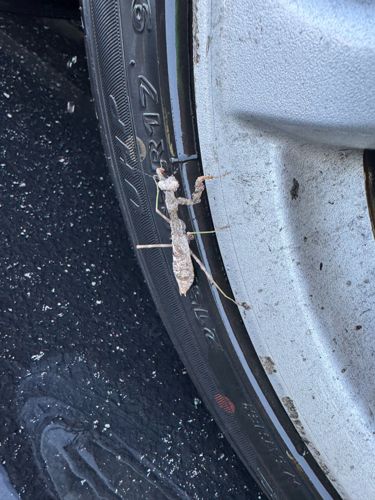Praying Mantis (likely a Carolina Mantis or Chinese Mantis based on appearance, but difficult to specify without more detail)
Scientific Name: Multiple species within the Mantodea order (e.g., 'Stagmomantis carolina' for Carolina Mantis, 'Tenodera sinensis' for Chinese Mantis)
Order & Family: Order: Mantodea, Family: Mantidae
Size: 2 to 6 inches (5-15 cm), depending on the species.

Natural Habitat
Gardens, meadows, forests, shrubby areas, and anywhere with abundant plant life to provide camouflage and prey. They are often found on various plants, bushes, and sometimes structures.
Diet & Feeding
Strictly carnivorous. They are ambush predators that feed on a variety of insects such as flies, moths, butterflies, crickets, grasshoppers, and sometimes even small vertebrates like lizards, frogs, or hummingbirds (though rare for smaller species).
Behavior Patterns
Mantises are known for their distinctive 'praying' posture, holding their spiky forelegs folded as if in prayer while waiting for prey. They are masters of camouflage, blending into their surroundings. They are solitary insects. The female is known for sometimes consuming the male during or after mating (sexual cannibalism). They typically lay their eggs in a protective case called an ootheca.
Risks & Benefits
Benefits: They are excellent natural pest controllers in gardens and agricultural settings, preying on many insect pests. Risks: Generally harmless to humans, they do not bite or sting unless severely provoked, and even then, a bite is usually not serious. They do not carry diseases.
Identified on: 10/7/2025